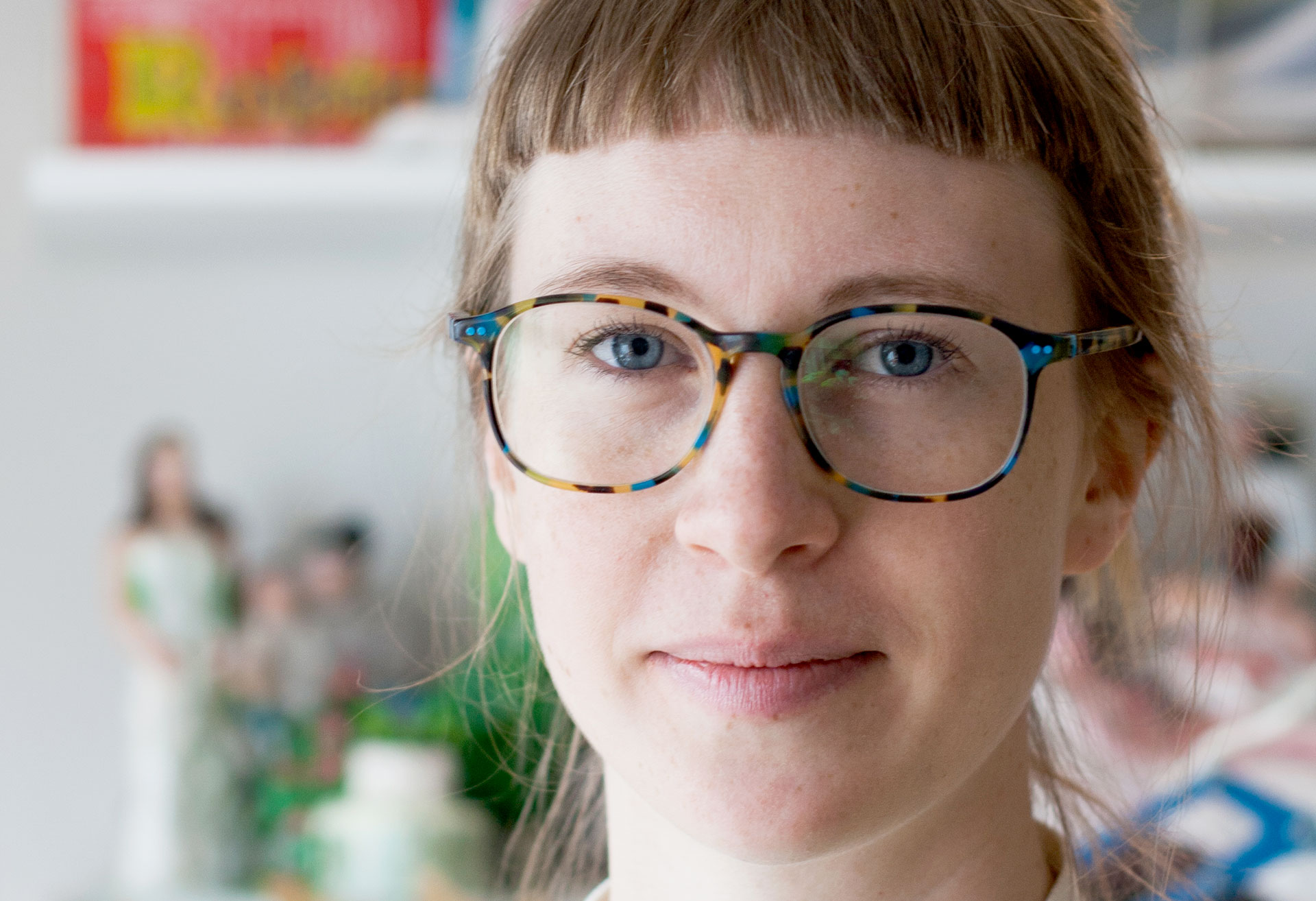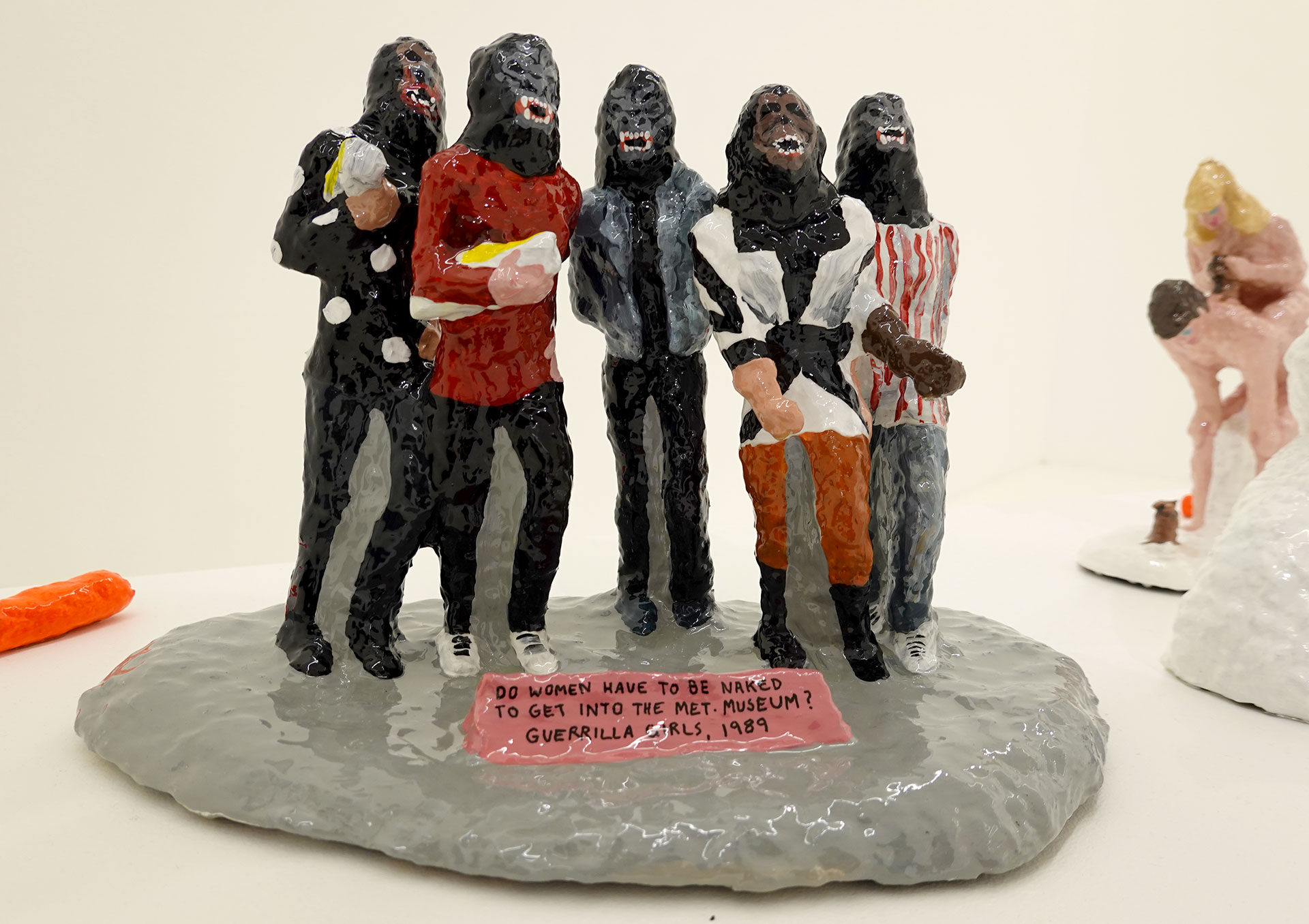
Removing the Filter: An interview with Auður Lóa Guðnadóttir
Auður Lóa’s exhibition Yes/No at the Reykjavík Art Museum reflects the diversity, chaos, and connections between the many corners of the internet. She pulls imagery from pop culture, art history, politics, and personal photographs that she finds by letting herself fall through an online rabbit hole. Curious to see these images out of context, Auður Lóa removes her subjects from the screen into the 3-dimensional world of papier-mâché sculpture. Her exhibition aims to draw new relations, mixing the variety of images one can come across on the world wide web in a single day. In this interview, I caught up with Auður Lóa to discuss this latest exhibition.
Amanda: Starting from the beginning…how did you get your start in artmaking? Do you have any early memories that led you to where you are now?
Auður Lóa: I have been making art since I was really small. I know that it sounds super cheesy, but I think I always wanted to become an artist. I was an introverted kid that just liked drawing. And then I became an artist. It is not a particularly interesting story, but I think it was an obvious choice for me.
Your subjects range from pop culture imagery to references to fine art, is there a connecting theme behind your choices? Where do you find your inspiration?
The imagery is sourced from the internet and books, so all of the images have happened in real life. Many of them are from history, art history, and pop culture. Some of them are actual characters from paintings and some of them are the artworks themselves. Others are just things that exist in the world. For this exhibition, I decided to embrace the chaos and use whichever images sparked my interest. There is a little web of ideas within them. So many of them touch on social justice subjects like feminism and colonialism, but also internet culture, how information travels, and how we make and perceive art. I usually make exhibitions that are narrowed down to one subject. But this time I was interested in branching out and mixing everything together. I was interested to see what would come out of that process. I just wanted to make as many sculptures as humanly possible.




Let’s talk material choices. What drew you toward working with paper-mâché? At first glance, it is easy to assume these are clay figurines, is this your goal?
I initially started working with paper-mâché because it’s really cheap. A lot of the time I have a bad conscience towards working with materials I buy from the store like plaster or clay. I find it hard as an artist to produce new things into this world–especially when the things are just there to just hang around or be kept in storage. I started working with paper-mâché because it took the pressure away from every single item. I wasn’t spending a whole lot of money on each piece and if I was fed up with it, I could just throw it away without thinking about it too much. It is a better environment to create when you have low stakes, to begin with. Because if you buy a shitload of clay you have this pressure of like “yeah, I better do something really nice with this nice clay and special paint and stuff.”
Also, paper-mâché does not constrain me to a specific size and I can work however large or small I want. It is a very hardy material and is nice to work with. I like the feel of it and I like the effect. It is very lumpy and hard to control so the material starts to become present in the work. I get that it looks like clay, but I don’t mind that so much. I draw inspiration from ceramic figurines so the associations to glazed ceramic sculptures is welcome. I would like it to be paper-mâché though, that is my bottom line.
These days, it seems like the mainstream internet aims for flawless, photoshopped images. Your work begins to reject this aesthetic, but at the same time, the final layer of your sculpture is a smooth, shiny coat of glaze–which fits within the ideals of perfection. Is this something that you were thinking about?
No, I don’t think that is very present in my practice. What I like to do with these images from the internet is to take them out of the computer screen. My main focus is what happens when you take these images that are on your computer, or your phone, and make them physical. You experience all your day-to-day imagery on the same screen. So you have the same filter when you read the news, do your social media, watch funny cat videos or porn–if you like that. What I’m interested in is taking all of these images and putting them on the same, equal platform.
The D-hall exhibition series was established for up-and-coming Icelandic artists to hold their first solo exhibition in a public museum. How did you prepare for this exhibition? Did you approach this exhibition differently than your previous ones in artist-run spaces?
Well, for starters it is a great opportunity and a great platform so I was really excited about this big opportunity. This is the biggest exhibition space I’ve had to myself so far. I was really interested and also a bit frightened of that. It’s different working in an established museum because there is staff working at the museum and with you. I was working with a curator and technical assistants. So that is nice and you feel really taken care of. But I also have a real soft spot for the artist-run spaces in Reykjavík. They have a lot to offer in a different way.
Are there any specific pieces in this that have a particularly interesting story? If you can’t decide, tell me about your current favorite.
I have so many favorites! The possum with the babies on her back is one of my favorites. And the big swan vase. And the portrait of Diana Spencer…
I did make some pieces that were from family photographs. My mom and dad are both in the show. And I made my little sister. I used a photograph from an old family photograph when she was just a baby. When we were little, we lived in a former British colony called Malawi in Central Africa. I made some sculptures that pertain to Malawi’s history, and I made a sculpture of my sister where she is being babysat by Janet, a woman who worked in our house. I felt that was an interesting sculpture to make and have this opportunity to have the global phenomenon of colonialism and racism and big subjects, but also staying within a light mood.
I secretly snuck in some sculptures that are really violent, and reference bad parts of history. I have not gotten a lot of comments on it, which is interesting because Icelandic people are not thinking about a lot of this stuff. You can easily go through this exhibition just looking at the cats, so I am guessing that is what most people do. Maybe the political sculptures are a little too hidden, but they are there if somebody wants to delve into them.



Personally, I believe it’s important that they are there. I think the way that you integrate these political sculptures into the show is reflective of how we encounter this kind of information in our lives. Maybe we’re not actively seeking out news about racism, or sexism, or feminism, but it’s there and it’s on the internet. I find it more relatable in that you advertise it as “this is a show about life” instead of “this is an important show about political issues”
Yeah and I also had to think long and hard about my place in talking about these subjects, as a participant in this society. It is important to take a stance or try to talk about this stuff without doing it in a way where people are not receptive to it. Or doing it in a “white savior” way. It is complicated, and I had to think long and hard about how these images should be portrayed and how they should be put in between.
I want to emphasize that I did not want to present the political sculptures in a way that seemed like I was making fun of them, even though they are mixed with humorous imagery. I wanted to do it in a respectful way.
In conclusion, what’s next for you? What are you thinking about these days?
Well, this exhibition was actually postponed twice. It was supposed to be last winter, now it opened in March. I just got all those sculptures out of the studio. The funny thing is I am opening a show at the Leysingar festival in Kompan Alþýðuhúsið at the end of May, so I just went straight into finishing up the works for that show. And then in the summer, I’ll be exhibiting with Staðir in the Westfjords. After that, think I will take a bit of a summer holiday…
Amanda Poorvu
Auður Lóa graduated from the fine arts department of The Iceland Academy of the Arts in 2015. Since then she has worked independently, and in the company of other artists; she has been involved in group exhibitions such as Á Ferð in Harbinger project space, Still life in The Reykjavík Art Museum, and 109 Cats in Sweaters in Ekkisens artspace. In November of 2017 she curated and presented her own work in the exhibition Diana Forever which was held in three locations in Reykjavík, and for which she received the motivational award of the Icelandic Visual Arts Council in 2018.
The show Yes/No takes place at the Reykjavík Art Museum as part of the D-hall exhibition series from 18.03.2021 to 09.05.2021.
Artist website: www.audurloa.com
Photo Credits: Portret of Auður Lóa: Ólöf Kristín Helgadóttir. Photos from exhibition: Artzine
The interview is part of a collaboration between Artzine and a new MA in Curatorial Practice at the Iceland University of the Arts.
Viðtalið er hluti af samstarfsverkefni Artzine og nýrrar meistaranámsleiðar í sýningagerð við myndlistardeild Listaháskóla Íslands á vorönn 2021.
